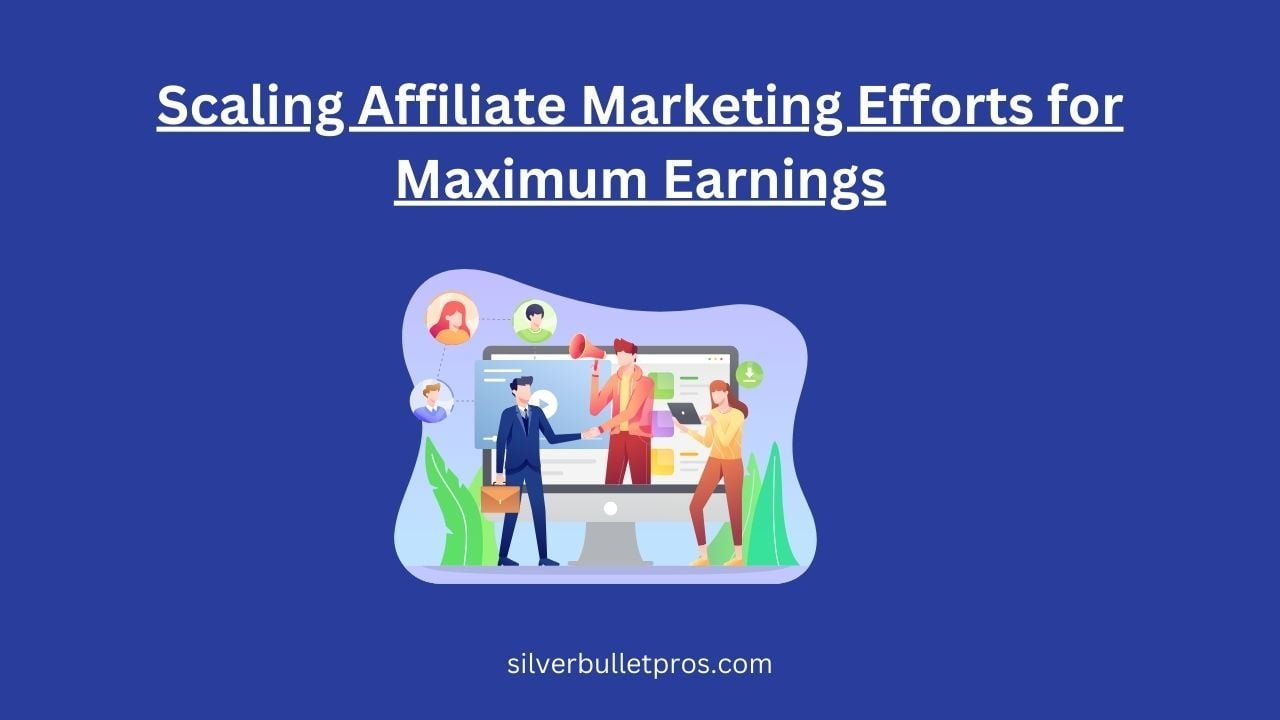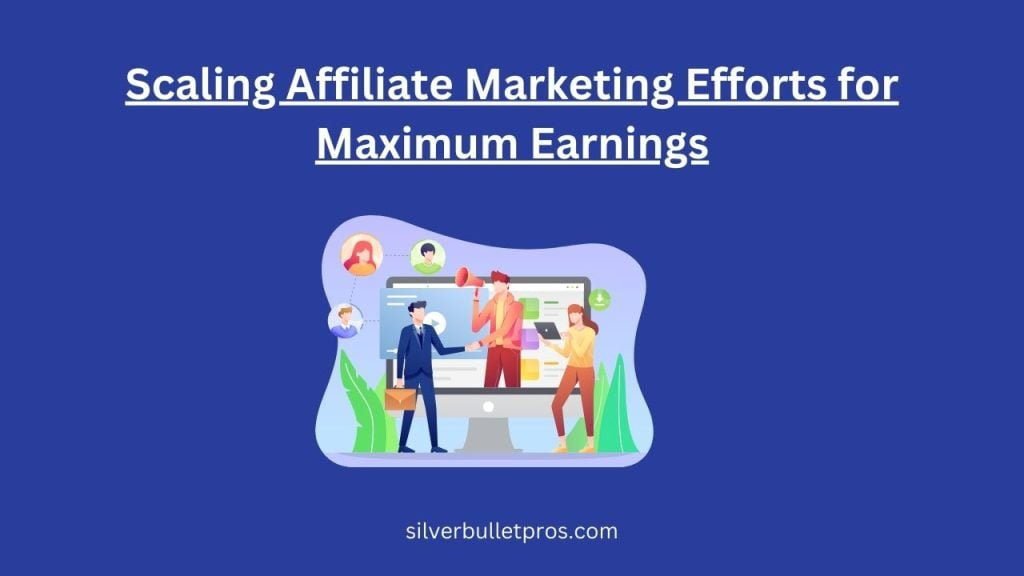

Scaling Affiliate Marketing Efforts for Maximum Earnings
Affiliate marketing is a performance-based marketing strategy where businesses reward affiliates for driving traffic or sales through the affiliate's marketing efforts. In simpler terms, it's a way to earn money by promoting products or services online and earning a commission for each sale made through your referral.In this comprehensive guide, I'll walk you through the essential steps to scale your affiliate marketing efforts for maximum earnings. From identifying profitable niches to building relationships with influencers, you'll learn actionable strategies to boost your affiliate income.
1. Identifying Profitable Niches
Short Answer: Focus on niches with high demand and low competition.
Choosing a profitable niche is crucial for affiliate marketing success. To identify the best niches, look for markets with high demand and low competition. Use tools like Google Trends, Ahrefs, and SEMrush to analyze search volume and competition levels.
A profitable niche combines high demand, low competition, and substantial monetization potential. Look for niches where people are actively searching for solutions and are willing to spend money. Examples include health and wellness, finance, technology, and hobbies like fitness or travel.
Researching a niche thoroughly ensures you target a market with enough interest to sustain your efforts and drive consistent traffic and sales.
2. Choosing High-Quality Products
Selecting the right products to promote is vital. Choose high-quality products that have positive reviews and high conversion rates. Use affiliate networks like Amazon Associates, ShareASale, and CJ Affiliate to find top-performing products.
High-quality products not only satisfy customers but also increase your chances of earning commissions. Look for products with a good reputation and proven track record. Check customer reviews and ratings to ensure you're promoting something valuable.
Also, consider the commission structure. Some products may offer higher commissions but have lower sales volume. Balance these factors to maximize your earnings.
3. Building a Strong Website
A strong website is the foundation of your affiliate marketing efforts. Ensure your website is user-friendly, fast, and optimized for search engines. Use WordPress with a responsive theme, and install essential plugins like Yoast SEO, WP Rocket, and Elementor.
Your website should provide a great user experience. Ensure it's easy to navigate, mobile-friendly, and loads quickly. A well-designed website builds trust and encourages visitors to stay longer, increasing the chances of conversions.
SEO is crucial for driving organic traffic. Optimize your content for relevant keywords, use meta tags, and create high-quality backlinks to improve your site's search engine ranking.
4. Creating Engaging Content.
Creating engaging content is key to attracting and retaining your audience. Produce valuable, informative, and entertaining content that addresses your audience's needs and interests. Use blog posts, videos, podcasts, and infographics to diversify your content.
Content should provide solutions to problems, answer questions, or entertain. Use a mix of formats to cater to different audience preferences. For example, write detailed product reviews, create how-to guides, and produce engaging videos that demonstrate product benefits.
High-quality content builds authority and trust, encouraging visitors to click on your affiliate links and make purchases.
5. Leveraging Social Media
Social media is a powerful tool for affiliate marketers. Use platforms like Facebook, Instagram, Twitter, and Pinterest to reach and engage your audience. Share your content, interact with followers, and join relevant groups and communities.
Each platform has its strengths. For instance, Instagram is great for visual content, while Twitter excels at real-time engagement. Tailor your strategy to each platform's unique features and audience demographics.
Consistent posting and interaction build a loyal following, driving traffic to your website and increasing the chances of affiliate sales.
6. Utilizing Email Marketing
Email marketing is an effective way to promote affiliate products. Build and nurture an email list by offering valuable content and incentives like free eBooks or discounts. Use tools like Mailchimp, AWeber, and ConvertKit to manage your email campaigns.
Emails allow you to communicate directly with your audience. Send regular newsletters, product recommendations, and exclusive offers to keep subscribers engaged. Personalized emails with targeted offers can significantly boost your conversion rates.
Segment your email list based on subscriber interests and behaviors to deliver more relevant content and increase engagement.
7. Tracking and Analyzing Results
Tracking and analyzing your results is essential for optimizing your affiliate marketing efforts. Use analytics tools like Google Analytics, Ahrefs, and SEMrush to monitor your website traffic, conversion rates, and revenue.
Regularly review your performance data to identify what's working and what needs improvement. Track key metrics like click-through rates, conversion rates, and average order value. Use this data to refine your content, marketing strategies, and product selections.
Data-driven decisions help you focus on the most profitable activities and improve your overall affiliate marketing performance.
8. Optimizing Conversion Rates
Optimizing conversion rates is about turning more visitors into buyers. Implement strategies like A/B testing, improving your call-to-actions (CTAs), and enhancing your website's user experience.
A/B testing involves comparing two versions of a webpage or element to see which performs better. Test different headlines, CTAs, and layouts to find the most effective combinations.
Improve CTAs by making them clear, compelling, and easy to find. Ensure your website is user-friendly, with fast load times and intuitive navigation.
Small changes can significantly impact your conversion rates and overall earnings.
9. Building Relationships with Influencers
Building relationships with influencers can amplify your affiliate marketing efforts. Collaborate with influencers in your niche to expand your reach and enhance your credibility. Influencers can promote your content and products to their established audience, driving traffic and sales.
Identify influencers who align with your brand values and have a genuine following. Reach out with a personalized pitch, highlighting the mutual benefits of collaboration.
Influencer partnerships can include sponsored posts, product reviews, and social media shoutouts. These collaborations leverage the influencer's trust and authority to boost your affiliate marketing results.
What is Affiliate Marketing?
To do affiliate marketing, join an affiliate program, choose products to promote, and share your unique affiliate links through your website, social media, or email campaigns. When someone clicks your link and makes a purchase, you earn a commission.
Affiliate marketing is a popular way to monetize a blog or website. It's a win-win: businesses get more sales, and affiliates earn passive income. By following the steps outlined in this guide, you can scale your efforts and maximize your earnings.
How to Get Started with Affiliate Marketing
Start by choosing a niche, finding affiliate programs to join, creating valuable content, promoting affiliate links, and tracking your performance.
How to Scale Your Affiliate Marketing Efforts
Diversify your income streams, invest in paid advertising, build an email list, outsource tasks, and continuously optimize your strategies.
What is a Target Audience?
Your target audience refers to the specific group of people you want to reach and market your products or services to.
What is SEO?
SEO (Search Engine Optimization) is the practice of optimizing a website to rank higher in search engine results and get more organic traffic.
What are Backlinks?
Backlinks are incoming links from other websites to your website, which are crucial for improving search engine rankings.
What is Social Media Marketing?
Social media marketing involves promoting your business, products, or services on social media platforms like Facebook, Instagram, and Twitter.
What is Email Marketing?
Email marketing is the practice of sending promotional or informational messages to a list of subscribers via email.
What is Conversion Rate Optimization (CRO)?
CRO is the process of optimizing your website or landing pages to increase the percentage of visitors who complete a desired action, such as making a purchase or filling out a form.